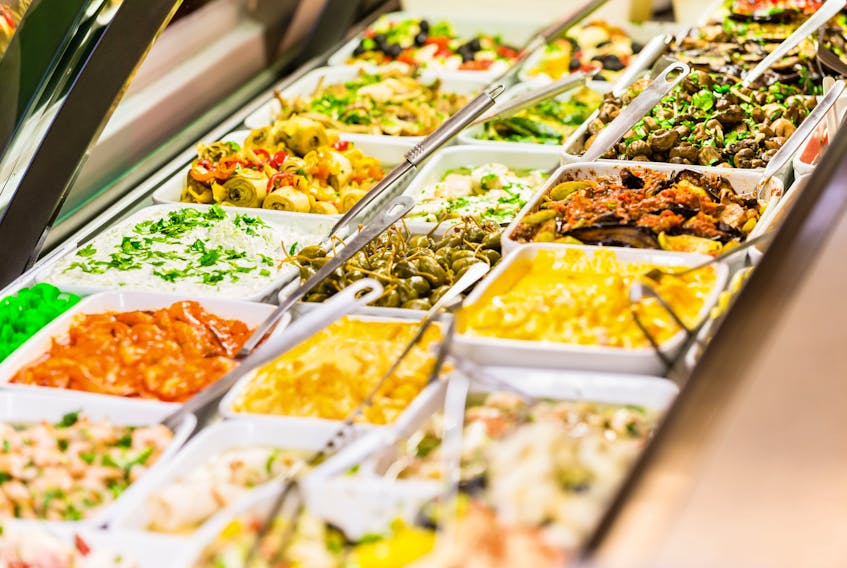Rising food prices are making food affordability a top concern for many Canadians, a trend a food expert says could benefit grocers.
A new survey released Dec. 17 by the Agri-Food Analytics Lab at Dalhousie University found 87 per cent of respondents feel food prices are increasing faster than their income.
The research says as food costs increase, the majority of consumers plan to slash their restaurant budget and cook more at home.
Dalhousie University professor Sylvain Charlebois said the situation presents an opportunity for Canadian grocers to join the “grocerant” trend.
“I think wanting to cook more is the new ‘I want to stop smoking.’ I’m not entirely convinced that people will actually cook more.”
-Sylvain Charlebois

Some grocers are competing with restaurants and fast-food chains by turning part of their stores into a prepared food market, offering meals to eat on site.
“I think there’s a tremendous opportunity for grocery stores,” Charlebois said in an interview. “People may go to grocery store to shop but they could also eat prepared foods there that are typically less expensive than at a restaurant.”
The survey of 1,507 Canadians conducted by Angus Reid found that 60 per cent of Canadians intend to eat less at restaurants in 2020. Eating in restaurants, once taxes and tips are added to the bill, can be significantly more expensive than preparing food at home.
But Charlebois said cooking at home requires more time and an understanding of how to prepare food.
“I think wanting to cook more is the new ‘I want to stop smoking,’” he said. “I’m not entirely convinced that people will actually cook more.”
Charlebois said this is why the “grocerant phenomenon,” which blends a restaurant experience with grocery shopping, has been successful.
It’s a model that’s been rolled out in China, for example, through the Alibaba Group’s Hema supermarket chain. Shoppers can buy fresh food – including live Atlantic lobster – and have it cooked on site and eat it in a food court-like setting.
Charlebois said “grocerants” introduce a new revenue stream for grocers, allowing them to repurpose some of the food that hasn’t been sold.
“It’s a win-win for everyone,” Charlebois said.

Falling behind
Meanwhile, the survey found that 94 per cent of respondents with a high school diploma feel they’re falling behind in their ability to pay for food.
Respondents with a university degree fared slightly better, with 78 per cent concerned about grocery costs.
To save money, 49 per cent of the survey’s respondents said they would use flyers and coupons more often and 48 per cent plan to look for discounts in grocery stores.
The concerns of food prices raised in the survey are echoed in recent research, which shows the cost of food rising faster than average incomes.
Canada’s Food Price Report 2020, released by Dalhousie and Guelph Universities, projected food prices would increase by four per cent in the new year.
Research by Morneau Shepell released earlier this fall found Canadian employers are expecting to increase base salaries by an average of 2.7 per cent in 2020.
Meanwhile, vegetable, fruit and meat prices – which tend to be more volatile – emerged as the food categories Canadians were most worried about.
Charlebois said mounting costs could force people to change their grocery shopping habits.
“It will probably compel consumers to seek refuge in areas where food inflation is not as pronounced, like in the freezer aisle,” he said.
As for New Year’s resolutions related to food, more than half of the survey respondents said they intend to reduce food waste in 2020.
Charlebois said this will help save money, and address climate change concerns associated with household waste.
The survey had a margin of error is 2.9 per cent, 19 times out of 20.








